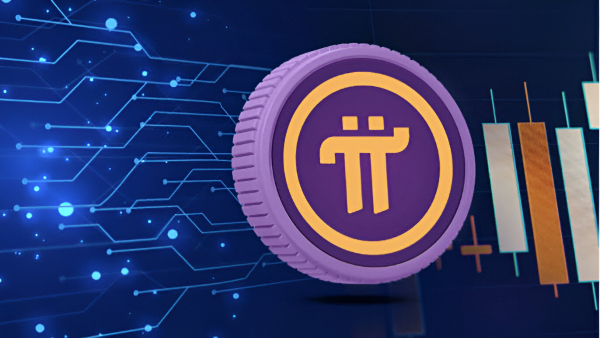Unpacking the Pi Network Turmoil: Login Glitches, KYC Failures, and Migration Chaos
The Pi Network, once hailed as a promising blockchain initiative aiming to democratize cryptocurrency mining via mobile app access, now faces a storm of user discontent and operational setbacks. A significant portion of its global community—the Pioneers—are reporting a cascade of technical hurdles and policy changes that have spurred frustration and mistrust. This comprehensive analysis explores the root of these issues, their ramifications on users, and the broader implications for Pi Network’s trajectory.
New Login Protocols and App Instabilities: A Source of User Distress
One of the initial flashpoints centers on the recent introduction of a mandatory video-based login protocol specifically targeting users in China. This new security measure, while aiming to bolster identity verification, has unexpectedly created a more complex and opaque user experience. Chinese users must now authenticate via video, a step some perceive as intrusive or burdensome. Meanwhile, global users suffer from the aftermath of the app update version 1.41.0, encountering cyclical login loops, especially when attempting to authenticate through Facebook or Google credentials.
Many users report an endless circle of redirections between Facebook permissions and the Pi Browser, which effectively locks them out of their accounts. Such glitches have escalated negativity about the app’s stability and the transparency of Pi Network’s developmental roadmap. Others highlight that mistakenly creating new accounts while trying to solve login problems risks fragmenting mining rewards across multiple identities. Although technically reversible by using the correct login method, the complexity of recovery is a frustration multiplier for everyday users.
KYC Verification Woes: Complexity and Consequences
The Know Your Customer (KYC) process, a critical step to uphold regulatory compliance and network security, has proven to be an additional bottleneck. Many Pioneers express confusion and aggravation over what they perceive as a convoluted, lengthy, or opaque identity verification process. The network’s hard deadline imposed in mid-March 2025 forced a rush to complete KYC verifications and migrate Pi balances to the mainnet, heightening pressure on users.
Users who missed this timeline suffered severe consequences—losing most of the Pi coins accumulated over their mining history and retaining only a fraction mined in the last six months preceding the migration deadline. This punitive measure deepened disillusionment and sparked vocal complaints across social media and dedicated forums. Issues with ownership verification, mismatched KYC data, and failed liveness checks have caused widespread account rejections, leading some users to accuse the project of unfair token forfeitures and poor communication.
Mainnet Migration: Delays, Lost Balances, and Locked Tokens
Arguably the most critical phase for Pi Network is the migration of mined Pi coins from the app-based system to the blockchain mainnet, enabling actual ownership and tradability. Unfortunately, this process has been riddled with challenges. Users report their balances either disappearing, reverting unexpectedly back to the app, or locking up with no clear explanations from the Pi Core Team.
The introduction of email-based two-factor authentication (2FA) seeks to replace the previously problematic SMS verification, aiming to increase security and usability. Nevertheless, delays and synchronization bugs persist. Migration delays have stretched into months, leaving users in limbo and eroding confidence. These problems intensified amid marketplace rumors of attempted account sales, as frustrated users try to liquidate inaccessible or stranded Pi assets.
Community Backlash and Allegations of Market Manipulation
Adding fuel to the fire, some community voices have accused the Pi Network team of market manipulation tactics. Suspicions abound that the project is deliberately restricting token liquidity by locking coins within the app ecosystem to artificially suppress selling activity and inflate perceived value. While these claims remain unproven, they underscore the severe mistrust brewing among loyal Pioneers.
Resistance has also emerged against potential Binance listings, with nearly 68% of polled users opposing the move due to unresolved KYC and wallet issues. This internal conflict signals a divided user base uncertain about the future viability of their mined assets.
Navigating the Path Forward: Tips and Interim Workarounds
Despite the considerable friction, some solutions and precautionary measures have surfaced within the Pi community:
– Login Recovery: Users advised to meticulously use the original login credentials and preferred authentication channels to avoid spawning new accounts and risking balance fragmentation.
– KYC Preparation: Gathering verified ID documents and carefully following instructions for identity verification can reduce the risk of rejection.
– Official Channels: Pi Network issued warnings for users to rely exclusively on the Pi Safety Center and official communication channels to prevent phishing scams.
– Patience and Vigilance: Recognizing that blockchain projects often encounter delays, Pioneers are encouraged to monitor updates via official Pi social media, remain aware of deadlines, and save important login/pass data securely.
Conclusion: Lessons from Pi Network’s Growing Pains
The Pi Network experience is emblematic of the complex challenges facing blockchain projects that aim to scale rapidly while maintaining security, regulatory compliance, and user trust. While the vision of accessible cryptocurrency mining remains compelling, the execution has stumbled amid technical glitches, stringent KYC protocols, and mainnet migration hurdles. The resulting user backlash highlights the importance of transparent communication, robust platform engineering, and empathetic user support in fostering a healthy crypto community.
Whether Pi Network can repair these fractures and deliver a functional, trusted ecosystem remains an open question. Its current predicament serves as a cautionary tale about the perils of rapid expansion without ironclad infrastructure and clear user guidance. Meanwhile, the Pi Pioneers must navigate a bumpy road ahead—balancing hope for future rewards against today’s practical frustrations.




